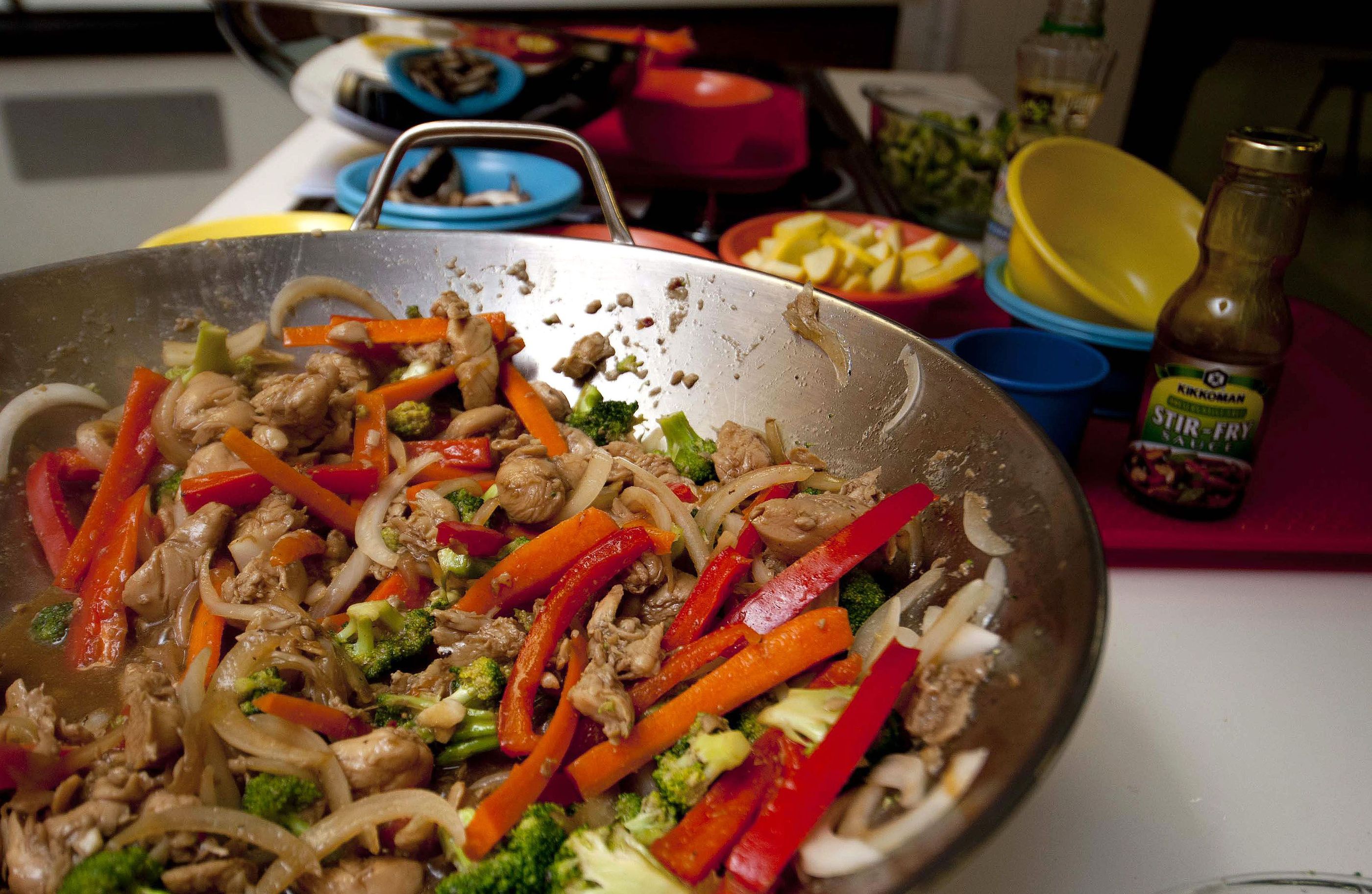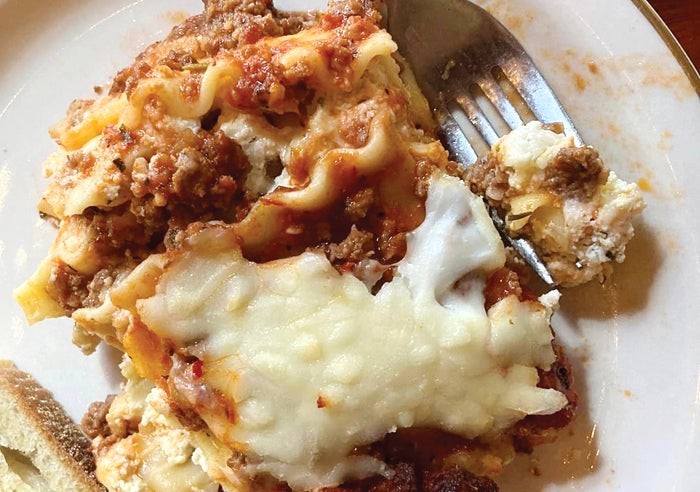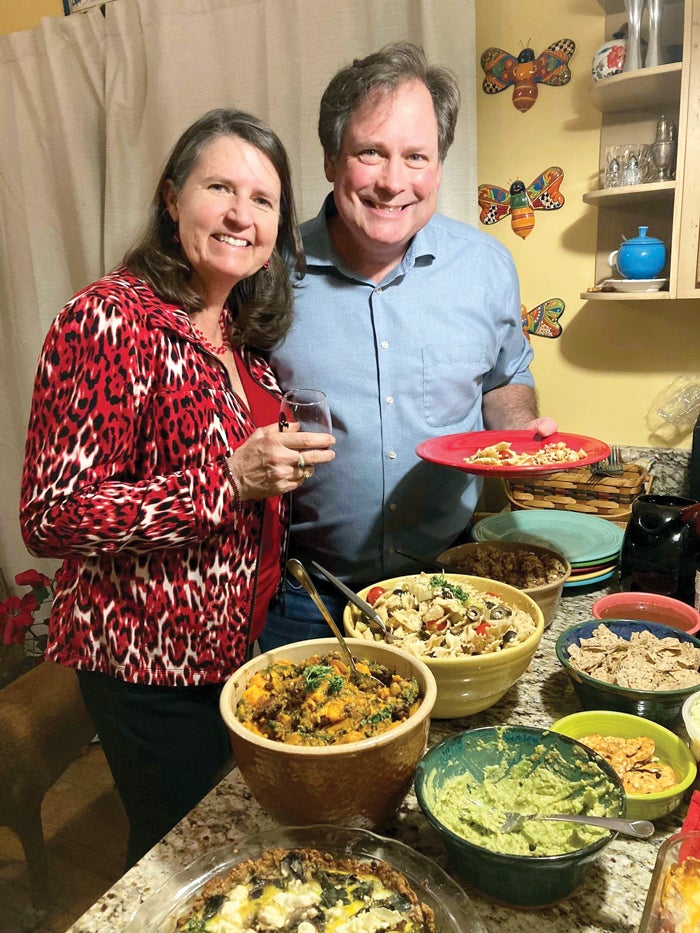Cut it up, stir fry it, savor the flavor
Published 12:00 am Tuesday, July 8, 2014
Summer is the perfect time for quick cooking, fresh, crisp vegetables and lighter eating.
Toi Degree, Family & Consumer Science agent with the Rowan Cooperative Extension Service, recently offered a quick course on stir frying at the Agriculture Center on Old Concord Road.
Degree explained that stir frying is nothing more than tossing and turning little bits of food in hot oil in a wok or skillet.
“It keeps the vegetables bright and crisp and the meats tender. And it can be done in just one dish,” she said, perfect for hectic lifestyles.
“It’s healthy — you use just a small amount of oil,” and it’s a good way to use the many fresh vegetables we associate with summer. Those veggies tend to retain their nutrients better with quick cooking.
“You can use greens, like Swiss chard, spinach and cabbage, peppers, squash, corn, broccoli, carrots.”
The wok, Degree said, was developed in China and worked on simple brick ovens. Typically, she said, people had a single-hole stove and the work fit in that hole. “It was efficient, fast and saved fuel.”
A wok is a wide bowl with sloping sides and a handle. The curve of the wok makes it easy to bring food in and to toss food. A broad, curved spatula is the best tool.
Woks can be made from carbon steel, which is most common, or cast iron or other metals. It’s usually about 14 inches across the top and has a flat bottom.
The high temperature of the wok allows meat to sear and preserves the juices. “You want to eat food just moments after it comes from the wok,” Degree said.
For her demonstration, Degree made two simple dishes — one just vegetables, and one with chicken, serving a different sauce with each.
Preparation takes time with wok cooking. Once that’s done, it’s 5-10 minutes to the table.
She slices vegetables thin, in bite-size pieces, so they cook in the same amount of time. Higher moisture vegetables take less time to cook; denser vegetables go in first, or they can be quickly blanched in boiling water before going into the stir-fry.
You can also use the wok lid to help steam harder veggies like broccoli or carrots. Leafy greens take just seconds to cook.
Degree uses small pieces of chicken or pork tenderloin. “Avoid thick chunks of meat,” she said, because they won’t cook through. Shrimp, scallops and firm fish like halibut work well. Thin fish fillets, like tilapia, can easily fall apart.
Degree used an electric wok, but she said a deep-sided skillet could work if that’s what you have, or an electric skillet. The one thing to think about in a skillet is foods may stick to the flat surface.
What’s the best oil to use for stir-frying? Anything with a higher burning temperature. Extra virgin olive oil burns at high temperatures and leaves an off taste. Vegetable oil, grapeseed, canola all work well and don’t leave any flavor. Save things like sesame or toasted sesame oil for the finish. All you need is a tablespoon or two for the entire recipe.
Preheat your wok, and you’ll know it’s ready when the oil starts to shimmer.
Don’t overcrowd the pan, Degree said. If you’re making a lot, do it in batches. Keep things moving. When you add meat, do it separately and look for chicken to turn white and become firm. When it’s 80 percent done, take it out and work on the veggies, then add meat back in, along with your chosen sauce, and let the flavors blend — but not too long.
When adding the sauce — one you made or from a bottle — push ingredients up the sides of the wok and leave a well in the center so the sauce can cook quickly, then bring everything together.
Cleaning a wok is usually easy, since foods don’t stick. Bamboo brushes are available at kitchen supply stores, if you want to be authentic.
Serve you concoction with rice or noodles or just plain. Be sure to cook the rice or noodles first and have them waiting for the toppings. The prep work makes cooking a breeze.






